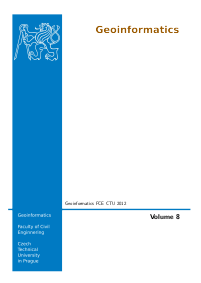From Discovery to Impact - Near Earth Asteroids
DOI:
https://doi.org/10.14311/gi.8.5Keywords:
asteroid, Near Earth Object, astrometry, impact probabilityAbstract
The Near-Earth Objects (NEOs) are the most important of the small bodies of the solar system, having the capability of close approaches to the Earth and the chance to collide with the Earth. We present here the current system of discovery of these dangerous objects, standards for selecting useful and important targets for NEO follow-up astrometry, system of impact probabilities calculations, and also determination of impact site and evacuation area.References
Minor Planet Center of the IAU at http://www.minorplanetcenter.net/
A. Milani, S.R. Chesley, A. Sansaturio, G. Tommei, and G. Valsecchi, “Nonlinear Impact monitoring: Line Of Variation searches for impactors,” Icarus, vol. 173, pp. 362-384, 2005.
NEOCP at http://www.cfa.harvard.edu/iau/NEO/ToConfirmRA.html or http:// www.minorplanetcenter.net/iau/NEO/ToConfirmRA.html
S. Larson Current NEO surveys, In: Near Earth Objects, our Celestial Neighbors: Opportunity and Risk, Proc. of IAU Symp. 236. 2007. P. 323 – 328.
J. Ticha, M. Tichy, M. Kocer, and M. Honkova, “KLENOT PROJECT 2002-2008,” Meteoritics & Planetary Science, vol. 44, issue 12, pp. 1889-1895, 2009.
SENTRY at http://neo.jpl.nasa.gov/risk/
NEODYS at http://newton.dm.unipi.it/neodys/
NASA NEO OFFICE at http://neo.jpl.nasa.gov/
A.B. Chamberlin, S.R. Chesley, P.W. Chodas, J.D. Giorgini, M.S. Keesey, R.N. Wimberly, and D.K. Yeomans, “Sentry: An Automated Close Approach Monitoring System for Near-Earth Objects,” Bull. Amer. Astron. Soc., vol. 33, pp. 1116, 2001.
P. Cinzano et al, Europe Mon. Not. R. Astron. Soc. 328, pp. 689-707 (2001)
IAA Planetary Defence Conference, Bucharest at http://www.pdc2011.org/
J. Ticha, M. Tichy and M. Kocer, The recovery as an important part of NEO astrometric follow-up, Icarus,Vol.159, No. 2, October 2002, pp. 351-357.
D. Koschny, M. Busch, G. Drolshagen, “Asteroid observations at the Optical Ground Station in 2010 - Lessons learnt”, 2011 IAA Planetary Defense Conference, Bucharest, 2011
ASE : Asteroid Threats: a Call for Global Response, report to AT-14 at UN-COPUOS 2008 (www.space-explorers.org/committees/NEO/docs/ATACGR.pdf)
Statement of the IAU presented to COPUOS at the 49th session of the Scientific and Technical Subcommittee, Vienna, Austria, 6-17 February 2012. By Karel A. van der Hucht, IAU representative to COPUOS, SRON-Utrecht, the Netherlands
Downloads
Published
Issue
Section
License
- Authors retain copyright and grant the journal right of first publication with the work simultaneously licensed under a Creative Commons Attribution License that allows others to share the work with an acknowledgement of the work's authorship and initial publication in this journal.
- Authors are able to enter into separate, additional contractual arrangements for the non-exclusive distribution of the journal's published version of the work (e.g., post it to an institutional repository or publish it in a book), with an acknowledgement of its initial publication in this journal.
- Authors are permitted and encouraged to post their work online (e.g., in institutional repositories or on their website) prior to and during the submission process, as it can lead to productive exchanges, as well as earlier and greater citation of published work (See The Effect of Open Access).

